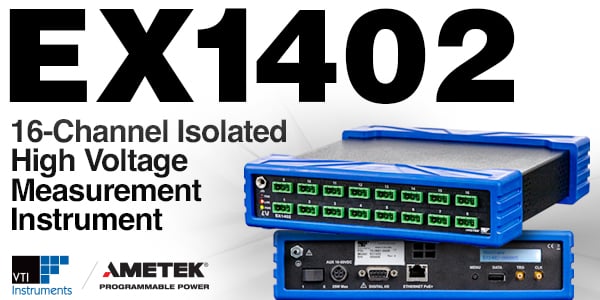The ability to count and measure things is key to the human race’s success. Without the capability to perform accurate measurements, the world as we know it would simply not exist. For example, there would be no electric lighting or heating because there would be no electricity. Similarly, there would be no radios and televisions, and no movies called Planes, Trains, and Automobiles. There would be no movies at all… or planes… or trains… or automobiles.
Can you imagine a world with no silicon chips, no computers or smartphones, no modern medicine—in fact, no science and technology at all? As Plato famously noted in the 4th Century BC: “If someone separated the art of counting and measuring and weighing from all the other arts, what was left of each (of the others) would be, so to speak, insignificant.”
In 1883, the British mathematician, mathematical physicist, and engineer, Lord Kelvin, articulated the importance of measurement as follows: “In physical science the first essential step in the direction of learning any subject is to find principles of numerical reckoning and practicable methods for measuring some quality connected with it. I often say that when you can measure what you are speaking about, and express it in numbers, you know something about it; but when you cannot measure it, when you cannot express it in numbers, your knowledge is of a meagre and unsatisfactory kind; it may be the beginning of knowledge, but you have scarcely in your thoughts advanced to the state of Science, whatever the matter may be… the grandest discoveries of science have been but the rewards of accurate measurement and patient long-continued labour in the minute sifting of numerical results.”
Lord Kelvin was Professor of Natural Philosophy at the University of Glasgow for 53 years, where he undertook significant research and mathematical analysis of electricity. He was also key in the formulation of the first and second laws of thermodynamics, and he contributed significantly to unifying physics, which was then in its infancy of development as an emerging academic discipline.
Application of the Test and Measurement in the Education Industry
Today, any educational facility with science and engineering departments teaches its students both the importance of being able to acquire accurate measurements and the ability to do so. Furthermore, universities around the world collaborate with industrial concerns on a wide variety of disciplines—such as materials science—that involve sophisticated test and measurement instruments.
AMETEK Programmable Power’s VTI Instruments brand has built an enviable reputation in test and measurement instrumentation over several decades, with a standing in educational circles that is second to none. Three measurement and data acquisition instruments that are of particular interest for deployment in educational institutions are the EX1401 16-Channel Isolated Thermocouple and Voltage Measurement Instrument, the EX1402 16-Channel Isolated High Voltage Measurement Instrument, and the EX1403A 16-Channel Bridge and Strain Gauge Measurement Instrument.
All EX14xx-Series instruments boast numerous capabilities, functions, and benefits that make them of interest for educational use, including the following:
- In general, educational establishments are on a tight budget. They are looking for cost-effective, high-accuracy test instrumentation products that are easy to install and use—attributes that are shared by all EX14xx instruments.
- Educational departments often start with standalone test instruments sitting on a desk or workbench. As the test environment increases in sophistication, with additional instrumentation, power supplies, and servers added to the setup, mounting everything in a rack may become necessary. All EX14xx instruments are equipped with rubber protection sleeves, thereby allowing them to be used standalone on desks or work benches. These sleeves can be removed to mount the instruments in racks.
- LAN eXtensions for Instrumentation (LXI) is a standard developed by the LXI Consortium. In addition to defining the communication protocols for instrumentation and data acquisition systems using Ethernet, the LXI standard also embraces the concept of Interchangeable Virtual Instrument (IVI) drivers as defined by the IVI Foundation. IVI drivers define an I/O abstraction layer that provides an interface-independent communication channel for test and measurement instruments. In addition to supporting Power over Ethernet (PoE), all EX14xx instruments are fully LXI-compliant, including support for IVI drivers.
- In the case of data logging, some test instruments allow the test data to be stored in internal memory, others will enable it to be stored on a plug-in USB Flash Drive (a.k.a. a memory stick), and some allow the data to be streamed to a server over Ethernet. All EX14xx instruments support all three of these options because each may be advantageous in different situations.
- Complete remote control of all EX14xx instruments is supported by their firmware, allowing them to be used “out-of-the-box” with a free web-based Software Front Panel (SPF). In the same way an Ethernet-connected printer can be queried to determine its ink-level status, EX14xx instruments can be set up and monitored using a web browser.
- Associated data acquisition software, such as general-purpose and high-speed data acquisition packages are available. However, free IVI drivers are available for Linux and Windows, along with documentation allowing users to create their own applications. These drivers can be accessed from within MATLAB from MathWorks, and free drivers are also available for use with LabVIEW from National Instruments.
- Of particular interest for university settings, all EX14xx instruments support a driverless interface, thereby allowing custom test data acquisition software to be created in any programming language (Python, C, C++, C#, Java, …) and run under any operating system.
More and more educational institutions are turning to VIT Instruments to satisfy their test and measurement instrumentation requirements. For more information, please read our Materials Testing and Thermal Testing white papers, check out our Infographic, and visit our Education Industry Webpage.





